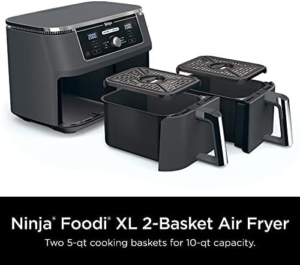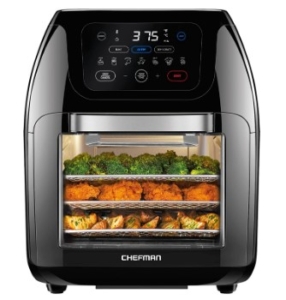Can You Microwave Styrofoam?
Exploring Safety, Risks, and Alternatives
When the hunger pangs strike, and the only thing between you and a hot meal is the microwave, ever wondered, can you microwave Styrofoam? Let’s break it down. Styrofoam, or more accurately, the foam containers you get your takeaway in, are mostly made from expanded polystyrene foam. This lightweight material is great for keeping your food hot or cold. But when it comes to reheating, not all foam containers are equal. Yes, some foam containers can safely be used in the microwave, but others might not be safe. The U.S. Food and Drug Administration has given the green light to some polystyrene food containers for hot and cold food, but that doesn’t mean they’re all microwave-friendly. So how do you tell them apart? Look for a small symbol of a microwave with wavy lines on the container. That’s your sign that it’s safe to reheat your food in it. If you don’t see that symbol, it’s better to transfer your food to a microwave-safe dish.
What is Styrofoam?
Styrofoam is a commonly used material in packaging, known for its lightweight and durable properties. However, there is often confusion between Styrofoam and EPS (expanded polystyrene foam), as they are not the same thing.
The Difference between Styrofoam and EPS
Styrofoam is actually a trademarked brand name for a specific type of building product made by the Dow Chemical Company. It is made from extruded polystyrene foam. On the other hand, EPS is the foam-like material used to make food containers and to-go cups.
EPS is composed of about 95% air, making it incredibly lightweight. It is derived from petroleum and natural gas, and it is manufactured with styrene, a chemical compound. This composition allows for excellent thermal insulation and makes EPS a popular choice for packaging materials.
Composition and Manufacturing Process of Styrofoam
Styrofoam is made through the extrusion process, where polystyrene beads are heated and mixed with a blowing agent. The mixture is then forced through a die, resulting in the characteristic foam-like structure.
The blowing agent used in the manufacturing process creates the air pockets within the foam, giving Styrofoam its insulating properties. This manufacturing process enables the foam to be easily molded into various shapes and sizes, making it versatile for different applications.
Can You Microwave Styrofoam?
When it comes to convenience, using a microwave to reheat food is second to none. However, not everything is safe to put in the microwave. This article will explore whether it’s safe to microwave plastic foam containers, specifically Styrofoam. We will discuss the FDA’s stance on polystyrene food containers, how to identify microwave-safe foam containers, potential risks of microwaving plastic foam containers, and hazards of using non-microwave-safe foam containers.
FDA’s Stance on Polystyrene Food Containers
The U.S. Food and Drug Administration (FDA) has deemed polystyrene food containers and packaging to be safe for hot and cold food items. However, it is important to note that not all foam containers should be microwaved. This is because some foam containers may contain materials that are not suitable for microwave heating.
How to Identify Microwave-Safe Foam Containers
To determine if a foam container is safe for microwave use, look for a small symbol of a microwave with wavy lines. This symbol indicates that the FDA has determined the container to be safe for heating in the microwave. If the container does not have this symbol, it is not safe to use in the microwave. It’s always better to err on the side of caution and use containers that are explicitly labeled as microwave-safe.
Potential Risks of Microwaving Plastic Foam Containers
When plastic foam containers are heated in the microwave, there is a chance that some styrene, which is a component of polystyrene foam, can migrate into the food within the container. This is particularly true for fatty items such as meats and cheeses. Styrene has been identified as a cancer-causing agent, so it’s important to be cautious when using plastic foam containers in the microwave.
Additionally, foam containers that are not marked as microwave-safe could melt or even catch fire if microwaved for too long. This poses a significant safety hazard and should be avoided at all costs.
Hazards of Using Non-Microwave-Safe Foam Containers
Even if a foam container is labeled as microwave-safe, it may not be the best choice for reheating food. Foam containers are designed to insulate and keep food hot or cold, but this same quality makes them poor vessels for even heating in the microwave. To ensure your food is heated evenly throughout, it is recommended to transfer leftovers to a microwave-safe container, such as glass or ceramic. Alternatively, you can use an oven-safe container and heat the food in the oven.
Using non-microwave-safe foam containers can lead to uneven heating, potential health risks, and safety hazards. It is always better to choose safer alternatives when it comes to reheating food.
Alternatives to Microwaving Foam Containers
Transferring food to microwave-safe containers
When it comes to reheating food, it’s important to be mindful of the containers you use. While some foam containers are labeled as microwave-safe, it’s generally recommended to transfer your food to microwave-safe containers. This ensures the safety of your food and minimizes the risk of any harmful chemicals leaching into your meal.
Microwave-safe containers are typically made of glass, ceramic, or certain types of plastic that are specifically designed to withstand the heat and microwave radiation. These containers are labeled as microwave-safe and usually feature a symbol of a microwave with wavy lines.
By transferring your food to microwave-safe containers, you can have peace of mind knowing that you are reheating your meal in a container that has been tested and approved for microwave use. This not only ensures the safety of your food but also helps to maintain its taste and texture.
Using oven-safe containers for reheating
If you prefer an alternative to microwaving your food, using oven-safe containers can be a great option. Oven-safe containers are typically made of materials such as glass, ceramic, or certain types of metal that can withstand high temperatures without melting or releasing harmful chemicals.
To reheat your food using an oven-safe container, simply place the container in the oven at a suitable temperature and let the food warm up gradually. This method allows for more even heating and can result in a crispier texture for certain dishes.
Using oven-safe containers not only provides an alternative to microwaving but also opens up a wider range of possibilities for reheating food. You can easily reheat casseroles, baked goods, and other dishes that require a more controlled and even heat distribution.
Conclusion
It is important to understand that not all foam containers are safe to be microwaved. While the U.S. Food and Drug Administration (FDA) has deemed polystyrene food containers and packaging to be safe for hot and cold food items, look for the small symbol of a microwave with wavy lines to ensure that the container is safe to use in the microwave. Foam containers without this symbol should not be microwaved as they may melt or catch fire if heated for too long.
There is a potential risk of styrene, a cancer-causing agent, migrating into the food within the container when heated. This risk is particularly true for fatty items such as meats and cheeses. Therefore, even if the foam container is microwave-safe, it is recommended to transfer the food to a microwave-safe container or an oven-safe dish for even heating.
In the interest of food safety and ensuring proper reheating, it is best to use alternative containers that are specifically designed for microwave use. By following these guidelines, you can safely reheat your food without compromising your health or risking any accidents in the microwave.





